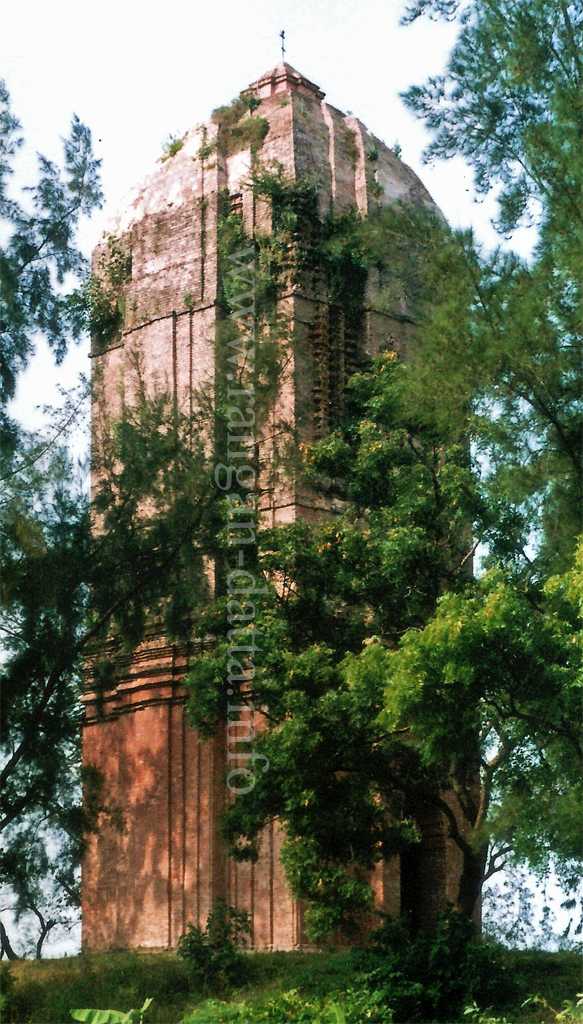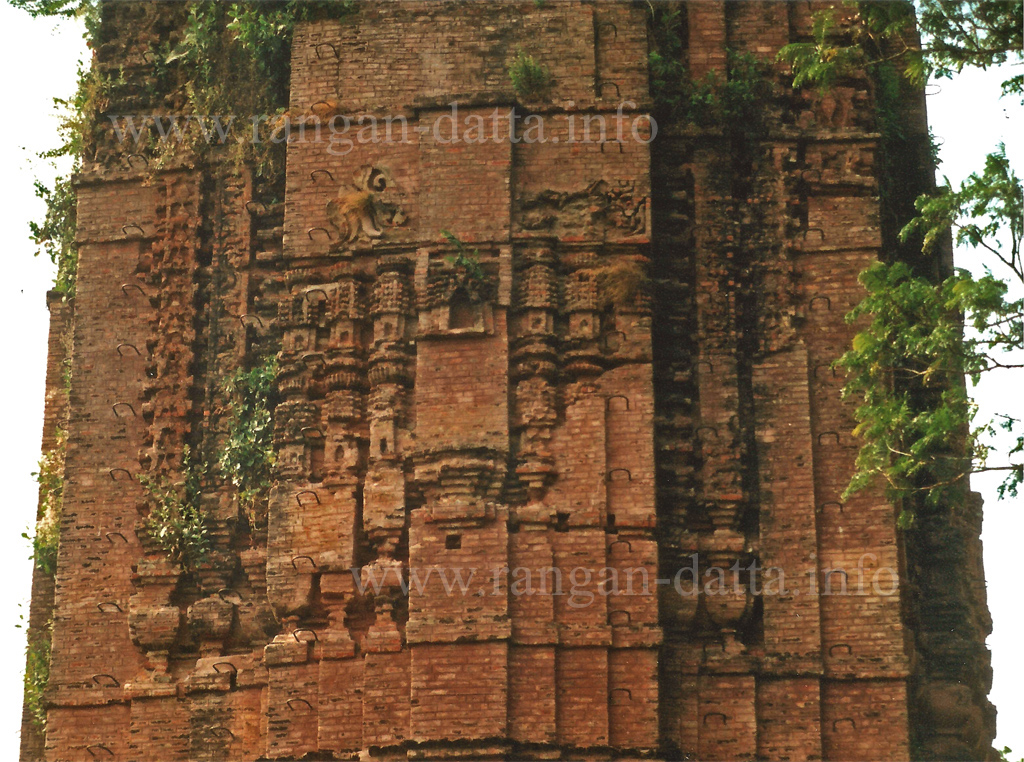| Mysterious structure
21 August 2010
 Jatar Deul not only provides the opportunity to photograph the temples from different angles but also fills your lungs with a welcome dose of oxygen, says Rangan Datta Jatar Deul not only provides the opportunity to photograph the temples from different angles but also fills your lungs with a welcome dose of oxygen, says Rangan Datta
In the middle of the nineteenth century, land surveyors stumbled upon a towering brick structure in the midst of the Sundarbans. The structure was surrounded by dense forest and was itself covered with thick vegetation.
It seemed like a mysterious structure filled with secrets. Who had constructed this temple in the heart of one of the densest forests in the world? What was the purpose of construction? When was it constructed? Was this part of a remarkable civilization that once flourished in Southern Bengal? Historians are unable to come up with any concrete conclusion
A copper plate found near the temple in 1875 suggests that Raja Joychandra constructed the temple in 975 AD. The plate has long been missing and absence of any other historical records on Joychandra has still kept the historians in the dark.
So while historians struggle to assemble the pieces of a giant jigsaw puzzle, you can well spend your next Sunday exploring the oldest brick built structure (that’s still intact) of the state.
Today, the forests have long gone and have been replaced with agricultural fields, but the temple still stands with its long and elegant spire towering above the treetops. The temple contains no idol but the locals believe it to be a Shiva temple and call it Jatar Deul (Jata: matted hair, Deul: temple), after the matted hair of Shiva.
Located about 80 km from Calcutta, Jatar Deul can be reached via Diamond Harbour. For the most comfortable journey, it is best to take the morning train / bus to Diamond Harbour. Get out of the station and hop into one of the M10 mini busses that would take you all the way to Raidighi. The busses are horribly crowded, but as you travel from terminus to terminus the crowd is not much of a problem. After about two hours of a terribly slow journey, you reach Raidighi.
After getting down from the bus, just walk across the newly constructed bridge across Moti River to Kankandighi where motor vans are available to take you to Jatar Deul. After a half an hour bumpy ride, you are at the temple complex that contains the lone towering Deul surrounded by eucalyptus and banyan trees. The Deul creates a striking contrast against the agricultural fields that surround it.
The temple is declared a monument of National Importance and is maintained by the Archaeological Survey of India (ASI). It rises to a height of 65 feet and stands on a base measuring 25 feet by 25 feet. The eastern wall is provided with an arched gateway leading to the inner sanctum, which is located below the ground level.
The sanctum contains idols and pictures of Shiva, Parvati, Karthik, etc., which are worshiped by locals but of no historical importance.
The exterior walls of the temple contain rich carvings, but only traces can be seen today as most of it has been lost due to unscientific restoration. The tip of the spire, which was broken off, has been reconstructed; unfortunately it neither resembles the grace and beauty of the former structure.
 A short walk through the agricultural fields will not only provide you with the opportunity to photograph the temples from different angles but also fill your lungs with a welcoming dose of fresh oxygen. A short walk through the agricultural fields will not only provide you with the opportunity to photograph the temples from different angles but also fill your lungs with a welcoming dose of fresh oxygen.
Finally it’s time for home. So follow the same route and you can well end your trip with a spectacular sunset at Diamond Harbour.
Getting there: Kolkata – Diamond Harbour bus/train (bus fare Rs 20, time 2 hrs). Diamond Harbour – Raidigh bus (fare Rs 20, time 2 hrs)
Kankan Dighi – Jatar Deul motor van (fare Rs 9, time 30 mins.)
Places to eat: Raidighi has a few basic eateries.
Festival: On 2nd Baikash (Mid April) a mela (fair) is held near the temple. The highlight of the mela is a horse race.
|

